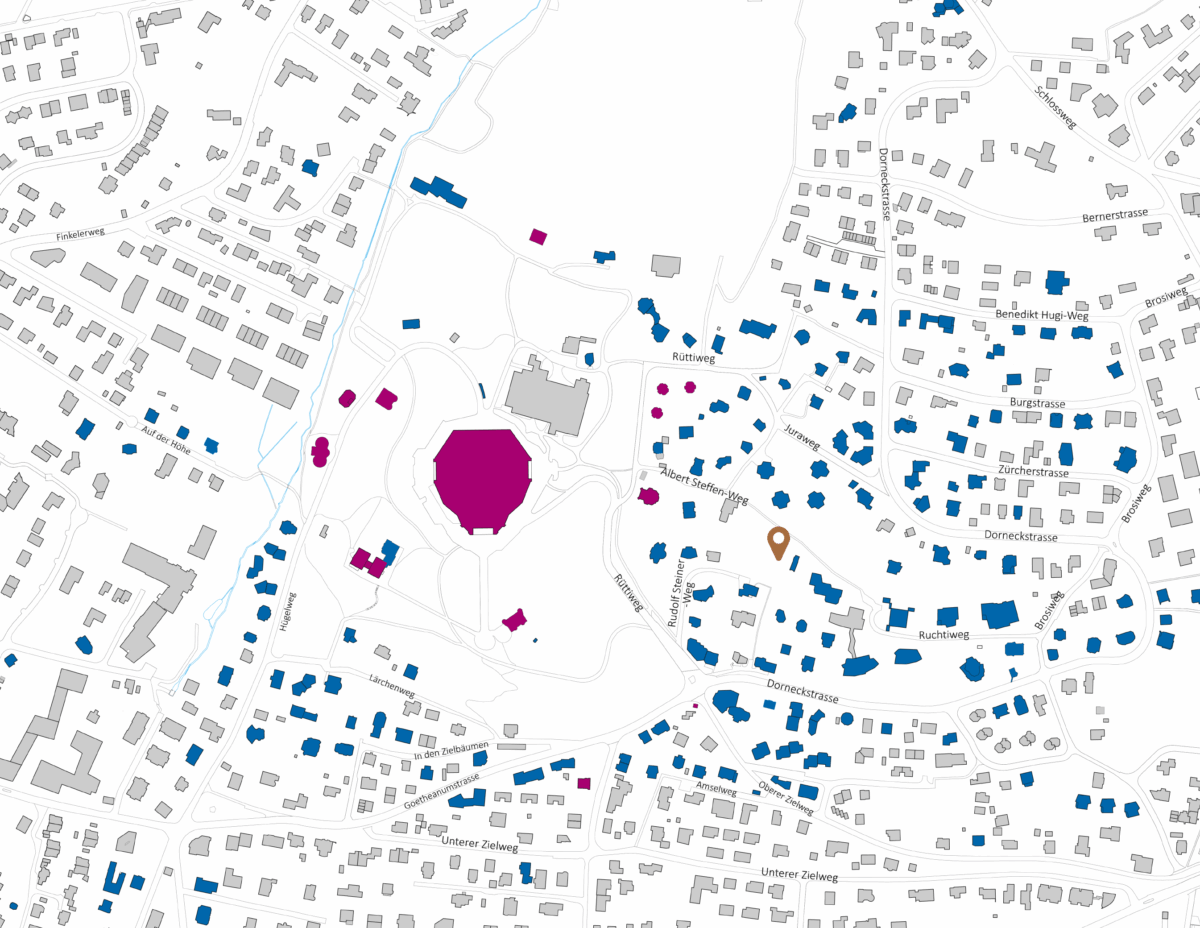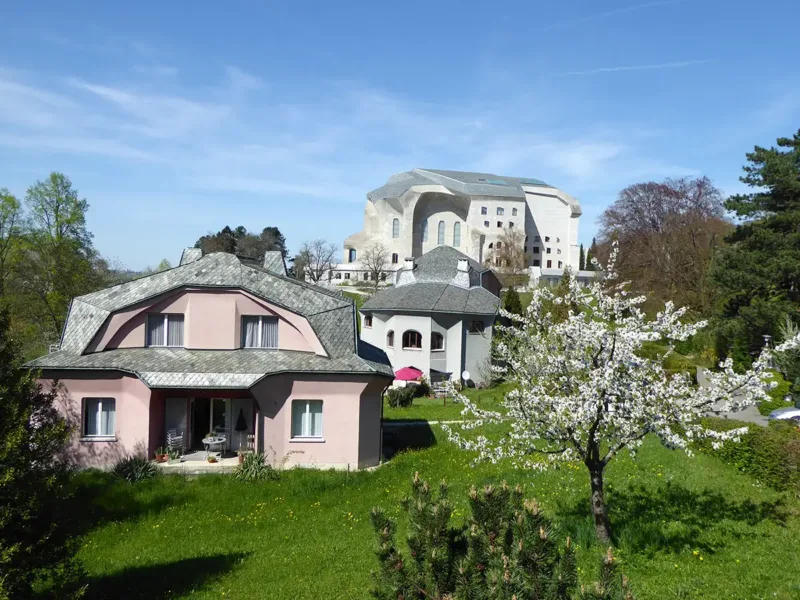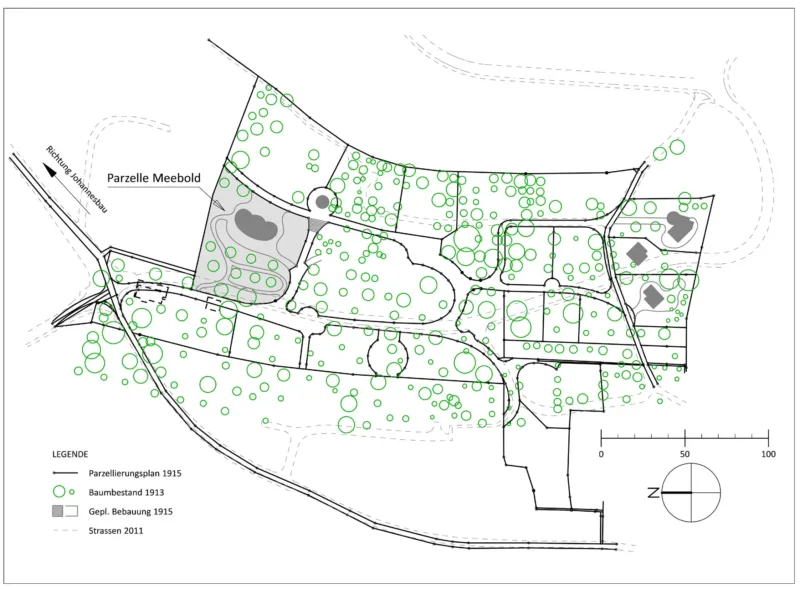3. Material
Designing fabric and shape
Building materials
Building on the Dornach hill was characterized by few materials:
- Norwegian slate from a specific quarry in Norway
- Wood in various forms: as shingles, as cladding, as carved glulam blocks at the First Goethenum
- Rough exposed concrete in all stages of patination
- Fine plaster in natural tones or colored.
While the materials used for the large buildings were often very deliberate, such as the slate reflecting the sky blue, the construction budget, construction deadlines or the preferences of the clients often determined the design.
Dornach’s architecture is often associated with a particular colorfulness. An idea that certainly has something to do with Waldorf school buildings.
The original buildings were much more often kept in natural tones, as the untreated exposed concrete on the Moser house or the wooden shingles on the extension in all stages of weathering show. The Jura stone plaster, which gives the façades an indeterminable depth depending on the aggregate and finish, as can still be seen on the de Jaager house, has increasingly given way to colored paints in recent decades, such as on the Hofmann house or the coffee and dining house.
Task: Try to perceive and compare the material qualities of the buildings in the colony.
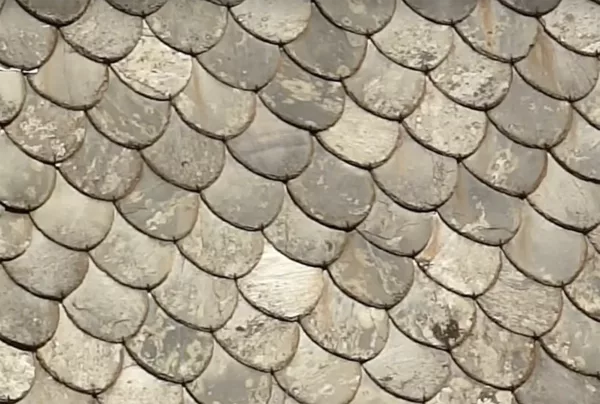
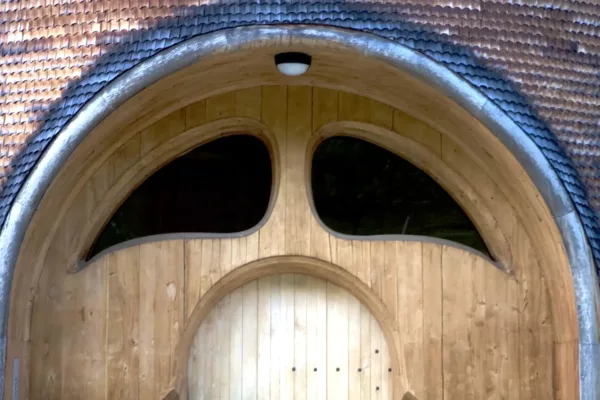
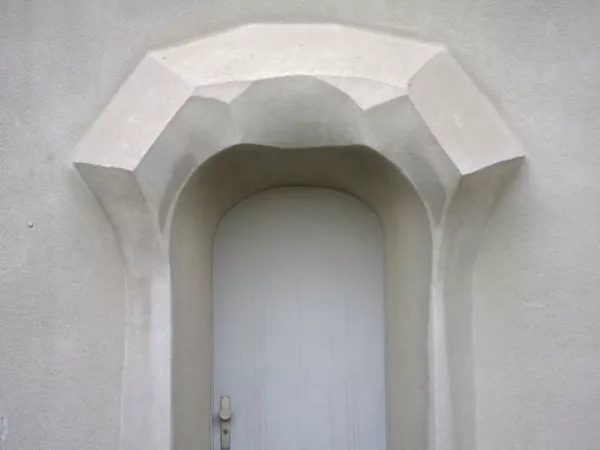
Pictures: © Norbert Roztocki
Discover the surroundings
Further stations
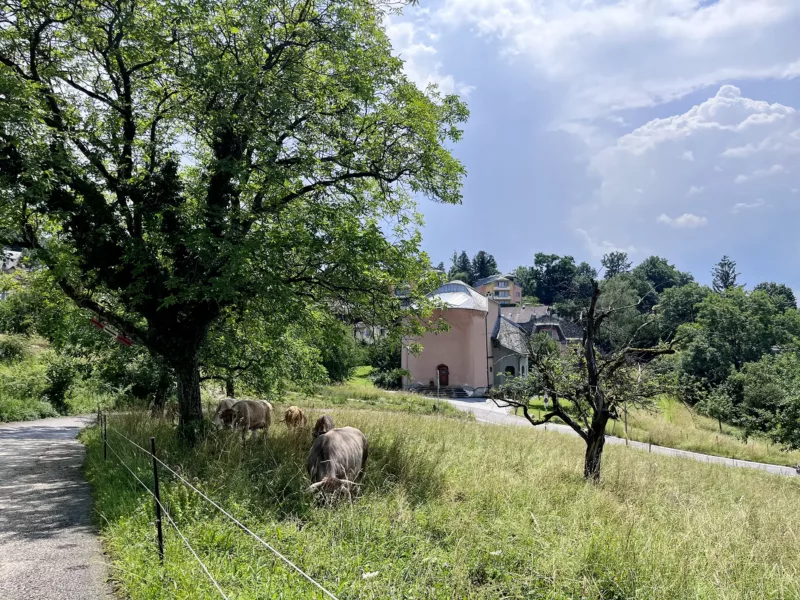
1. Landscape
The Goetheanum and the surrounding sculpturally and organically shaped houses were planned into an old cultural landscape. Architecture, nature and landscape design were to form a special unity and enhance each other’s impact.
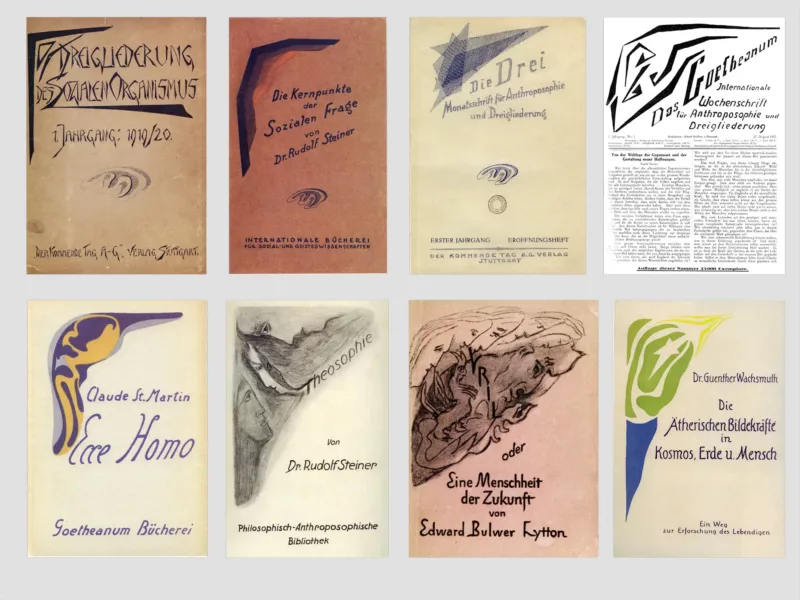
2. Links
The buildings of the Dornach Colony were consciously created from the anthroposophical world view. They are connected in many ways with other branches of anthroposophy, as an expression, as a framework, as the result of development processes.
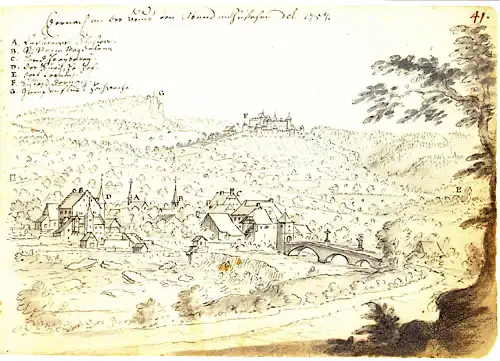
4. Environment
From the very beginning, the links to the Dornach community were diverse and not always clear. The anthroposophists who wanted to build were an economic factor, a foreign body, an enrichment and a change agent. Without them, however, neither the Anthroposophical Society nor Dornach would be what they are today.
Location
